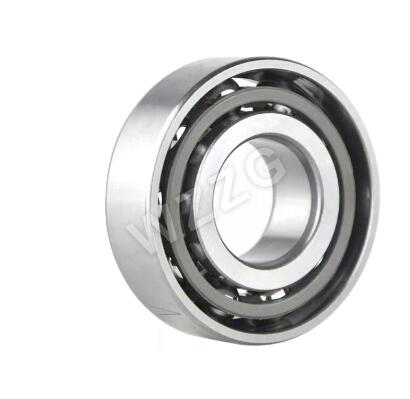Jul. 11, 2023
Mechanical Parts & Fabrication Services
Bearings are essential mechanical components that enable smooth rotation and reduce friction in various applications. Two common types of bearings are angular contact bearings and ball bearings. While both serve the same fundamental purpose, there are distinct differences between them. Let's explore these differences to gain a better understanding of each type.
Design and Construction: Angular Contact Bearing: Angular contact bearings have an angular contact point between the inner and outer raceways. They typically consist of inner and outer rings with a set of balls or rollers between them. The angle between the contact surfaces allows these bearings to handle both radial and axial loads simultaneously. Angular contact bearings are designed to accommodate high-speed and high-precision applications.
Ball Bearing: Ball bearings, also known as radial bearings, consist of inner and outer rings with a set of balls between them. The balls are typically made of steel or ceramic and are separated by a cage to maintain equal spacing. Ball bearings are primarily designed to handle radial loads, where the load is applied perpendicular to the axis of rotation. They are commonly used in low to moderate speed applications.

Load Capacity and Direction: Angular Contact ball Bearing: Angular contact bearings have the ability to withstand both radial and axial loads simultaneously. The angle of contact between the races and balls allows these bearings to handle higher axial loads compared to ball bearings. This makes angular contact bearings ideal for applications where there is a combination of radial and axial loads, such as in machine tools or automotive applications.
Ball Bearing: Ball bearings are primarily designed to handle radial loads, where the load is applied perpendicular to the axis of rotation. They can efficiently support radial forces, making them suitable for applications such as electric motors, fans, and conveyors. However, they have limited ability to handle axial loads and are not optimized for such applications.
Speed and Precision: Angular Contact Bearing: Angular contact bearings are engineered for high-speed applications and precise rotational movements. Their design allows for minimal contact and friction between the balls and raceways, reducing heat generation and enabling smooth operation at high speeds. These bearings are commonly used in machine tool spindles, robotics, and aerospace applications that require precise motion control.
Ball Bearing: Ball bearings can operate at moderate speeds, but they are not specifically designed for high-speed applications. Due to their larger contact surface and higher friction, they generate more heat at higher speeds, limiting their performance in such conditions. Ball bearings are suitable for applications where speed is not a critical factor but reliable radial load support is required.
In summary, the angular contact bearings excel in applications requiring simultaneous handling of radial and axial loads, high-speed operation, and precise motion control. On the other hand, ball bearings are more suited for applications with predominantly radial loads, moderate speeds, and general-purpose usage. Understanding the specific requirements of your application will help you choose the most appropriate type of bearing to ensure optimal performance and longevity.
Previous: Where are the Key Applications for Slurry Pumps in Wastewater Treatment Systems?
Next: Welded Lamination: Exploring the Advancements and Applications
If you are interested in sending in a Guest Blogger Submission,welcome to write for us!
All Comments ( 0 )